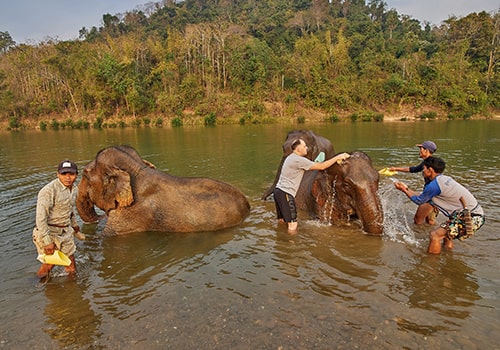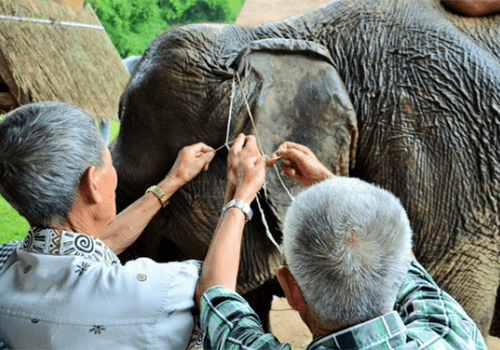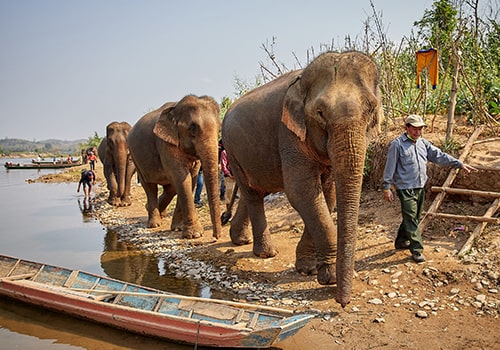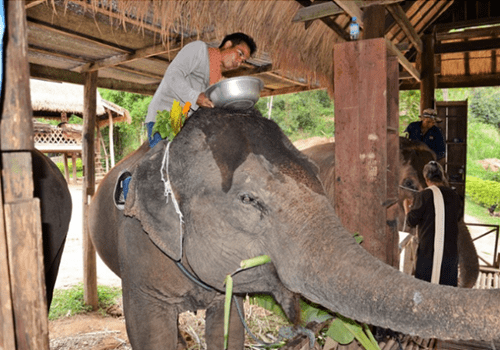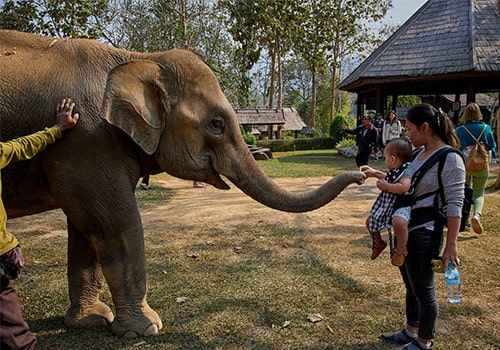
Elephant Village
Established in 2001, Elephant Village has been supporting indigenous people in remote areas by giving them employment through the creation of jobs under fair social circumstances.
Elephant Village ensures the support and the survival of elephants living in harmony with nature and the community. They are kept away from abusive work and cared by professional veterinarians.
Elephant village ensures the preservation of a pristine river valley that otherwise would be destroyed by signing a multi-year lease agreement with the Lao government to establish a sustainable tourism project.
What We Do
Elephant Village gives rescued elephants a safe, secure home where they are free from abusive work. Elephant Village provides local villagers a better livelihood so they can stop their slash and burn tradition.
Why We Do It
Elephant Village operates under the principle of care & share. By caring for the elephants and sharing with the local communities Elephant Village ensures that everyone benefits from your visit… you included.
Who We Work With
Elephant Village has access to a veterinarian who works not just with the elephants but trains the mahouts and local people how to care for their elephants in an internationally recognised way.
Mission Statement
Laos was known as the Land of a Million Elephants (Lane Xang) but the elephant in Laos is now a profoundly endangered species. Some 1000 remain, of which an estimated 500 work in the forest industry harvesting timber.
But harvesting of timber in Laos is diminishing and it’s just a matter of time before this becomes obsolete. This translates into hundreds of jobless elephants.
Keeping an elephant is very costly and labor-intensive. Above all, it is because elephants need tremendous amounts of food.
So, what can be done with these elephants?
If answers are not found quickly, elephants may be sold to the highest bidder, or worse.
There have been a few efforts towards releasing elephants into the wild in Thailand with little success. Domesticated elephants are no longer naturalised to life in the jungle and there is little ‘wild’ left in them . Thus, releasing elephants into the wild doesn’t appear to be a viable alternative.
These former logging elephants face a bleak future because they will find themselves on the margin of urban environments with no chance of finding adequate food or water and no access to veterinary care. Some say many of the soon-to-be jobless elephants may even be killed, or abandoned to a slow starvation.
So, how can their survival be ensured and who is going to take care of them?
The tourism industry provides a possible solution.
The Aim of Elephant Village
Our aim is not only to rescue working elephants from the harsh and abusive environments in which they must make their living but also give them a brighter future by providing rides or mahout training courses to tourists. This is relatively easy work for elephants and allows them to earn their own living.
In addition, Elephant Village provides the opportunity for tourists to get to know these very special animals, observe them and spend some time with them. And we allow the elephants to roam freely in the jungle, group together in herds, mate and start new families.
We have access to a professional veterinarian to provide care for the elephants and training for our staff and mahouts, ensuring that the elephants receive ongoing, high-quality medical attention.
Elephant Village also supports the local community and increase people’s well-being while working towards the survival and safety of the elephants. The project employs villagers from Ban Xieng Lom as Elephant Lodge staff, maintenance workers, cooks and guides. A few also train to become mahouts.

